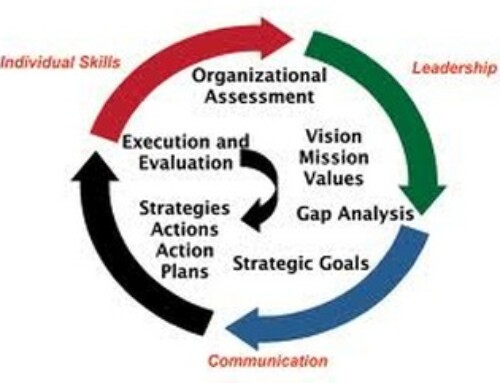 When Daniel Castro from the Internet Technology and Innovation Foundation (ITIF) took the stage at Inman in New York on January, we all thought he was going to provide an academic view of our industry and provide us with some food for thought. What we didn’t know was that he was going to tell us how the consumer needs Open Data because we have somehow been holding back on them. We also didn’t know at the time that the ITIF had been promoting Zillow for many years. Castro published an article on the Federal Government’s Economic and Statistics Administration website featuring a promotional video from Zillow in 2015 entitled “Open Data Impact: How Zillow Uses Open Data to Level the Playing Field for Consumers.”
When Daniel Castro from the Internet Technology and Innovation Foundation (ITIF) took the stage at Inman in New York on January, we all thought he was going to provide an academic view of our industry and provide us with some food for thought. What we didn’t know was that he was going to tell us how the consumer needs Open Data because we have somehow been holding back on them. We also didn’t know at the time that the ITIF had been promoting Zillow for many years. Castro published an article on the Federal Government’s Economic and Statistics Administration website featuring a promotional video from Zillow in 2015 entitled “Open Data Impact: How Zillow Uses Open Data to Level the Playing Field for Consumers.”
The contentious conversation that begin at the Inman Data Track got me thinking about all of the ways that the industry supports provides open data for use by brokers of all types, technology companies, both start-ups and well-established leaders and of course, the consumer.
As some of you may know I used to be SVP of Fisher-Price. I have been trained to think first and foremost about the needs of the consumer. Without meeting the needs of toy buyers, we were dead in the water. In the real estate industry, if we ignore home-buyers and sellers, we’re out of business too. That’s why so many organizations focus on getting home buyers and sellers the information they need to make sound decisions.
When thinking about the diversity of the Washington, DC crowd attending the FTC/DOJ Workshop, I became inspired to write a comprehensive paper that explains in detail how our industry works. I thought it might be helpful to provide an overview of how data is curated, cleansed and distributed for those that don’t sleep, eat and breathe this real estate data stuff like so many of us do.
As I wrote the paper I became more and more inspired by the great work and progress in providing transparency and depth of content that can truly help a consumer make a much more well-informed decision. We have made a ton of progress in the past 10 years when the last FTC/DOJ Workshop happened.
Here are 5 key Takeaways I realized as I wrote the paper:
- Consumers have PLENTY of data available to them today and they appreciate it
WAV Group estimates there are at least 100,000 websites that offer consumers a myriad of data related to purchasing and selling a home. MLSs and Entrepreneurs now offer active, pending and sold property data as a minimum. Many sites surrounding property data with market stats, public records, Walk Scores, neighborhood information, real-time mortgage rates, agent performance ratings, parcel maps, street view maps, lifestyle cost calculators, home renovation history and even Home Energy Scores offered in partnership with the Department of Energy.
Hitwise, a leading provider of industry Internet market stats, tells us that nearly 1% of all Internet traffic is related to real estate; proof positive that consumers like to devour the information we provide.
WAV Group fields more consumer research than any other consulting firm in the industry. To date, we have NEVER heard a consumer express frustration that the real estate industry was holding back on them. We would love to see the quantitative, unbiased research that suggests otherwise.
- Ease of accessing and leveraging real estate data has improved greatly
The real estate industry takes its job of delivering accurate, timely comprehensive and compliant data that consumers can rely on VERY seriously. That’s why we employ more than 1000 people in MLSs, public records companies and data providers that do nothing but ensure that the data is clean. That number does NOT include the estimated 2 million real estate professionals who do the hard work of walking a home and capturing features, room sizes and the condition of the home.
Today, there are several ways for technology companies and brokerages to access real estate data for websites, applications, mobile apps, and even voice-activated solutions. Technology companies can access data from companies like Move’s ListHub, CoreLogic’s Trestle, WolfNet Data Services, Zillow’s Bridge Interactive platform and others. If the data requested is to be used by a broker, the company can access data from individual MLSs or take advantage of centralized, multi-market feeds from companies like Cornerstone or the soon to be launched MLSGrid.
Finally, if a company needs FREE MLS data to test in their applications, they can access the RESO Reference Server available through the Austin Board of REALTORS. The server provides a full feed of MLS data that mirrors the scope of live data that can be used for testing functionality, scalability, and consumer interest. There are over 500 companies that have taken advantage of this free service to date.
- Standardized Data is Fueling Innovation and Efficiency
Standardized data is the key to innovation and efficiency and we’re making great progress on rolling it out in the real estate industry. Today, 97% of real estate professionals work with MLSs that provide a data feed that are consistent with RESO standardized fields. The RESO Web API makes it much faster and cheaper to distribute information as well. In fact, RESO with the support of WAV Group, recently published a case study that demonstrated that RESO could save the industry as much as $1 billion dollars while speeding up data deployments. Today, RESO has a thriving and diverse membership of tech companies, brokerages and MLSs that work together to find new ways to standardize data for everything from saved searches to green fields to organizational identification.
- The definition of a traditional vs. non-traditional brokerage is muddy at best
One of the questions to be posed at the FTC/DOJ workshop involves a discussion about the current state of the “traditional” versus “non-traditional” brokerage. As I pondered this question, I came to the conclusion that there is no such thing as a traditional versus a non-traditional brokerage anymore. That construct is completely irrelevant in today’s market. The entrepreneurial spirit is alive and well in companies as large as Realogy and as small as a single-person start-up brokerage. There are companies like eXp Realty that are taking the best of “traditional” business models and innovating in new and exciting ways. Are they traditional or non-traditional? I can’t really answer that question but I can say they broke a $1 billion market cap and grew from 1000 to nearly 13,000 agents in less than 2 years. How about an independent brokerage like Pacific Union in San Francisco? They have tripled the size of their revenues in less than 5 years! Traditional or Non-Traditional? I don’t know and I don’t care. I’m just proud to see that we have strong leaders in our industry that know how to satisfy the needs of their customers and they get rewarded with aggressive growth.
With that said, there are tons of new entries in real estate that are killing the game too. Compass has taken several luxury markets by storm. HomeSmart International is going gangbusters. How about United Real Estate? They came out of nowhere and they’re quickly expanding their franchise across the country! Let’s not forget Lake Homes Realty, a soon to be national NICHE brokerage that focuses on nothing but Lake Communities. These companies operate in traditional ways but have found a unique way to create rapid and exciting growth.
There’s another category of brokers emerging called iBrokers. The iBrokers like Open Door and Offerpad are making a splash in selected markets too. And the best news for these well-marketed flipping services? Their commission rates are HIGHER than other broker business models! Capitalism is at work again.
- The industry is uniting to provide even more access to real-time real estate data.
Fifth, as I reflected on the past several years in real estate, I realized how much great work has been done to make it even easier to leverage real estate information.
The National Association of REALTORS®, in partnership with the Leading Real Estate Companies of the World and The Realty Alliance, have overhauled IDX policy opening up the potential to market pending and sold properties in addition to actives. The policies have tightened up data feed approval timelines and require fresher data than ever before.
I am also very proud of the work the industry is doing with initiatives like the Broker Public Portal with Homesnap and UpstreamRE. Both of those industry initiatives push on the status quo and encourage industry collaboration at an unprecedented level.
Bottom line, after writing my 41-page missive, I have to say that I believe the real estate industry is doing what it takes to continue to re-invent itself to meet the needs of today’s consumers.
I’m interested to see how the Workshop discussion goes. I will undoubtedly have some more to say after we hear the conversation!
If you would like to download the report click here.





I am very interested in reading the full report
“To date, we have NEVER heard a consumer express frustration that the real estate industry was holding back on them. We would love to see the quantitative, unbiased research that suggests otherwise.” Your finding doesn’t surprise me. It reflects my personal experience over 16 years in real estate. If anything, the more I get into the details with my clients the more often I get an answer like “That’s more than we need to know. You are the expert. That’s why we are working with you.”
Great work Marilyn! Your insight and knowledge into this industry from many year’s experience makes you uniquely qualified to provide informative points.
Thanks for the kind words Jan! Hope this document can be helpful as an educational document for those entering the business.